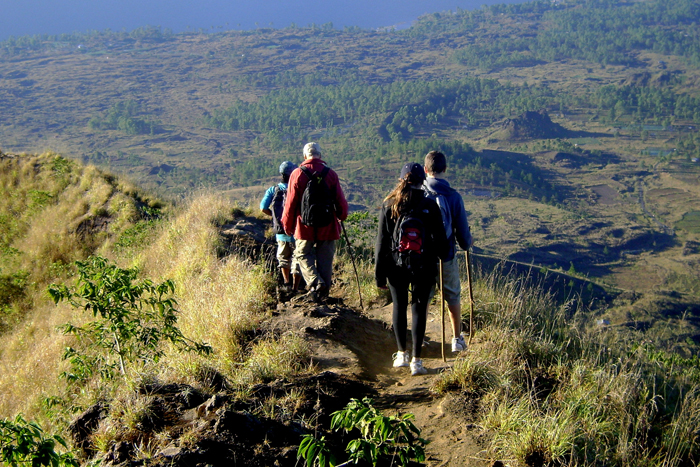Trekking Tips

Choose the correct footwear for your trek
Good quality and appropriate footwear for your trek and your walking training is essential. A supportive hiking shoe with ankle protection is important but beware of ankle cuffs that are too high as they can irritate the Achilles tendon at the base of your calf. Look for an ankle cuff that is scooped away at the back. Make sure that your trekking boots are thoroughly broken in and your feet have bedded in — the time for blisters is now, not during your trek. When purchasing your boots, try to shop in the afternoon when your feet have expanded slightly so that you get the correct size.
Don’t forget your walking socks
With plenty of footwear focus, it’s easy to forget about the best type of socks to wear. The right boots with the wrong socks will ruin your trekking trip so when trying on boots, wear the same socks that you intend to use for your trek. Look for materials such as Cool-max that has sweat wicking properties or consider the new Gore-Tex range that wick sweat away but are also waterproof.
Hydrate yourself frequently when walking
Whether you are in a hot climate or not, your fluid requirements will increase significantly when trekking. Losses on the breath and from sweating will serve to reduce your blood volume, resulting in your heart having to work much harder. By the time you feel thirsty you will already be dehydrated so try and drink small, frequent quantities of water throughout the day. Carry out the urine test to monitor your hydration: a pale straw color indicates that you are well hydrated, anything darker means that you need to drink more.
Fuel your trekking
Similarly to hydration, your energy requirements will increase whilst you are trekking. Aim to eat small, frequent meals and snacks on the go to maintain energy levels. Depending on the part of the world, your favourite snack-type foods may not be plentiful, but fruit is frequently available which is easy to eat on the move and excellent for an energy boost. During your training, experiment with eating ‘on the go’, so that you get used to the feeling of food in your stomach when you are trekking.

source : http://www.adventurousewe.co.uk/news/preparing-for-your-trek/

